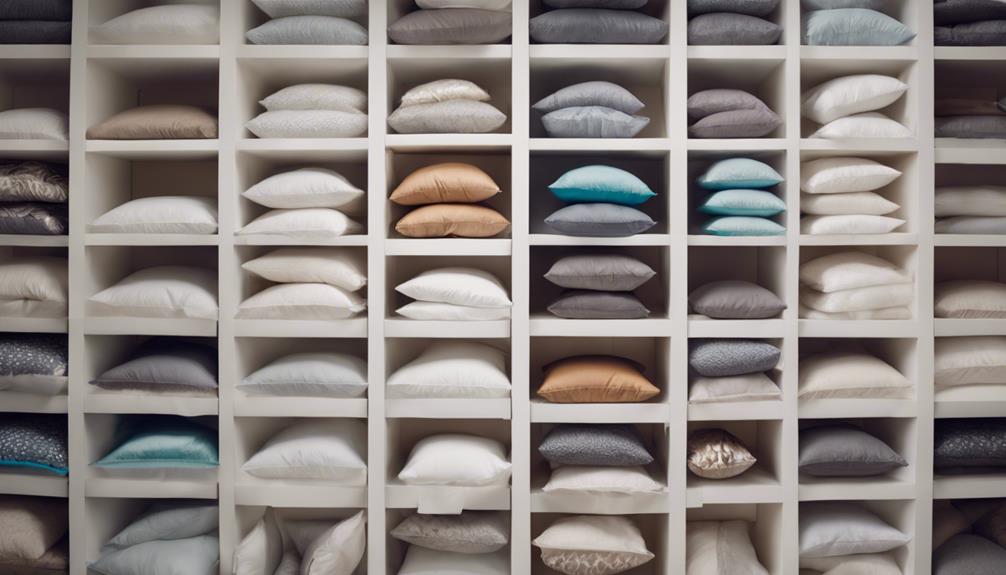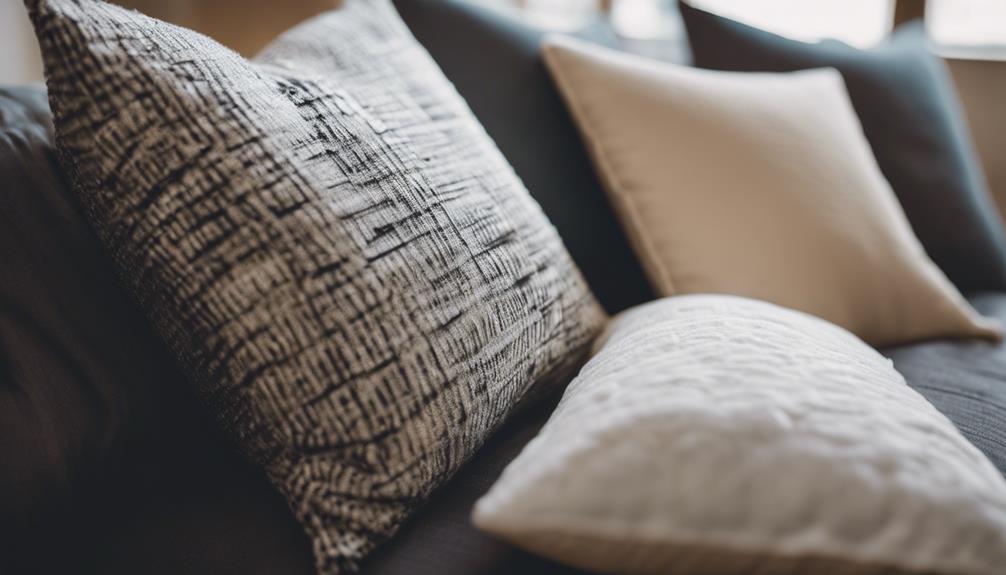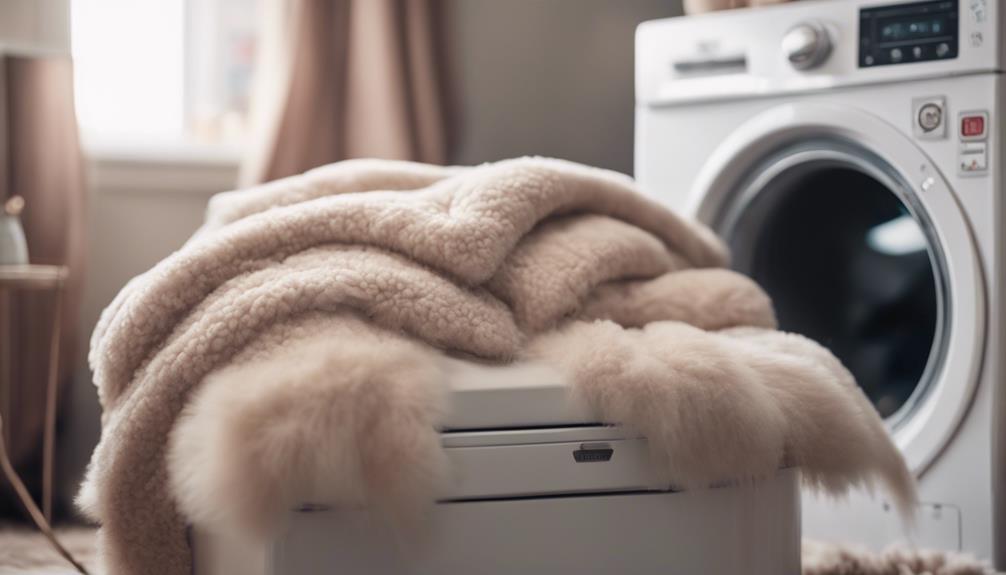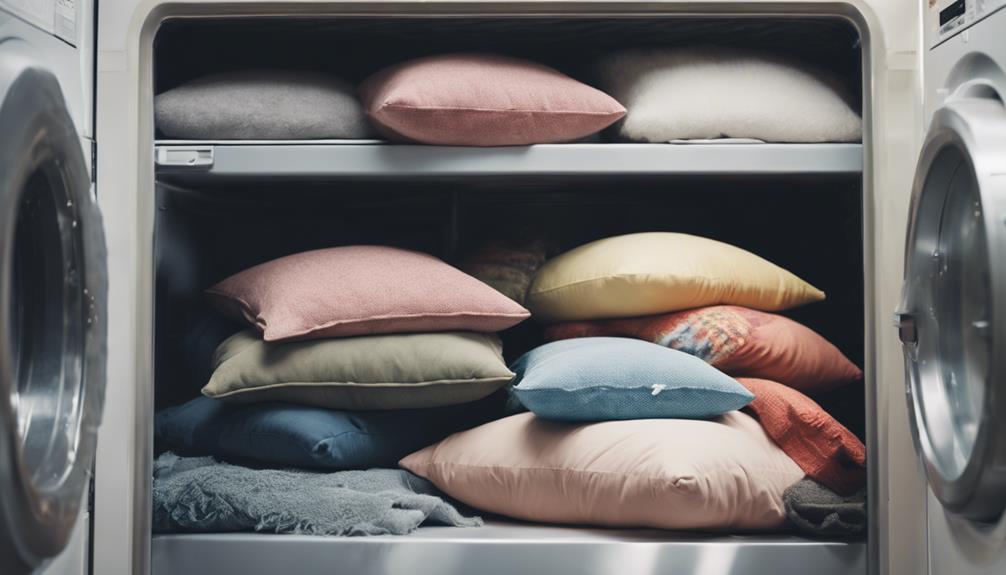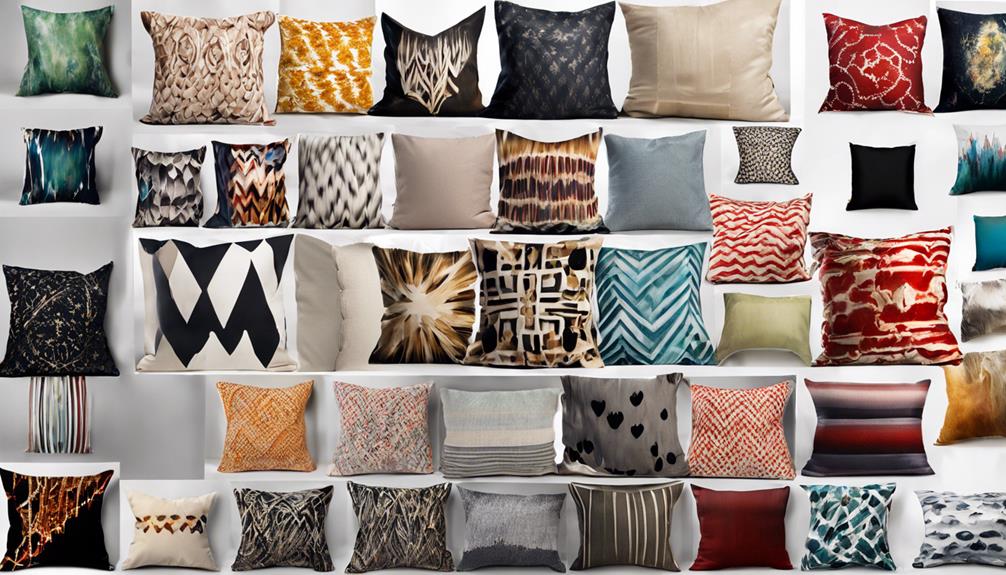When choosing a filling for a throw pillow, options such as polyester fiberfill, down feathers, foam inserts, memory foam, and buckwheat hulls each offer unique benefits. Polyester fiberfill is hypoallergenic and easy to clean, making it a cost-effective choice. Down feathers provide luxurious softness and warmth with superior loft. Foam inserts offer customizable support and durability, making them ideal for allergy sufferers. Memory foam provides personalized pressure relief and improves sleep quality. Buckwheat hulls offer firm support and eco-friendly qualities, promoting airflow for a cool night’s sleep. Various fillings cater to different comfort, support, and allergy needs, providing a range of options for throw pillows. More details on each type are available.
Key Takeaways
- Polyester Fiberfill: Soft, hypoallergenic, and easy to clean; cost-effective for throw pillows.
- Down Feathers: Luxurious, warm, lightweight, and long-lasting for cozy throw pillows.
- Foam Inserts: Customizable support, durable, hypoallergenic, and contouring comfort for throw pillows.
- Memory Foam: Personalized support, durable, hypoallergenic, and promotes better sleep quality.
- Buckwheat Hulls: Firm, eco-friendly, promotes cool sleep, rustic charm, and adjustable for comfort.
Polyester Fiberfill
When filling throw pillows, we typically use polyester fiberfill due to its affordability and availability. Polyester fiberfill is a synthetic material known for its soft and fluffy texture, making throw pillows comfortable for both lounging and decoration purposes.
One of the advantages of polyester fiberfill is that it's hypoallergenic, making it a suitable option for individuals with allergies to natural fillings like feathers. Additionally, this material is easy to clean and maintain, as it can be machine washed and dried without losing its shape or loft.
While polyester fiberfill may compress over time compared to down or feather fillings, it remains a popular choice due to its resilience and cost-effective nature. The affordability and accessibility of polyester fiberfill make it a practical option for filling throw pillows, providing a comfortable and aesthetically pleasing addition to any space.
Down Feathers
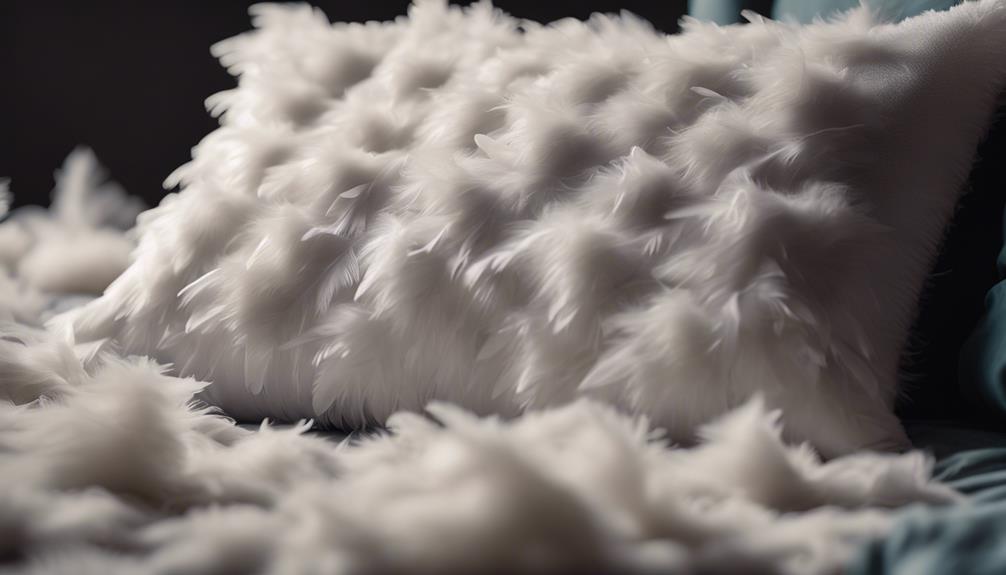
Down feathers, renowned for their luxurious and soft qualities, are a popular choice as filling material in throw pillows for their plush appearance and comfortable texture. These feathers provide excellent insulation, adding warmth and coziness to decorative throw pillows. Their high-quality guarantees superior loft and resilience, allowing the insert to maintain its shape over time.
Additionally, down feathers are lightweight and breathable, promoting better air circulation within the throw pillow. This feature helps regulate temperature and prevents the pillow from becoming too hot. The premium quality and luxurious texture of down-filled throw pillows elevate the overall aesthetic of home decor, making them a sought-after choice for those looking to add both comfort and style to their living spaces.
When selecting a filling material for decorative throw pillows, down feathers stand out for their softness, insulating properties, and long-lasting quality.
Foam Inserts

Foam inserts, a popular alternative to down feathers, are favored for their resilience and support in throw pillows. When considering foam inserts for your throw pillow cover, there are several key points to keep in mind:
- Customizable Support: Foam inserts come in various densities and firmness levels, allowing you to tailor the feel and support of your throw pillow to your liking.
- Durability: High-density foam inserts maintain their shape well over time, ensuring long-lasting support for your pillow.
- Hypoallergenic Properties: Many foam inserts are hypoallergenic and resistant to dust mites, making them an excellent choice for individuals with allergies.
- Supportive Contouring: Memory foam inserts offer exceptional contouring and pressure relief, enhancing the comfort of your pillow.
- Ideal for Allergy Sufferers: The hypoallergenic nature of foam inserts makes them a great option for those sensitive to allergens commonly found in traditional pillow inserts.
When selecting a pillow insert, foam inserts are a practical and comfortable choice that can enhance your overall pillow experience.
Memory Foam
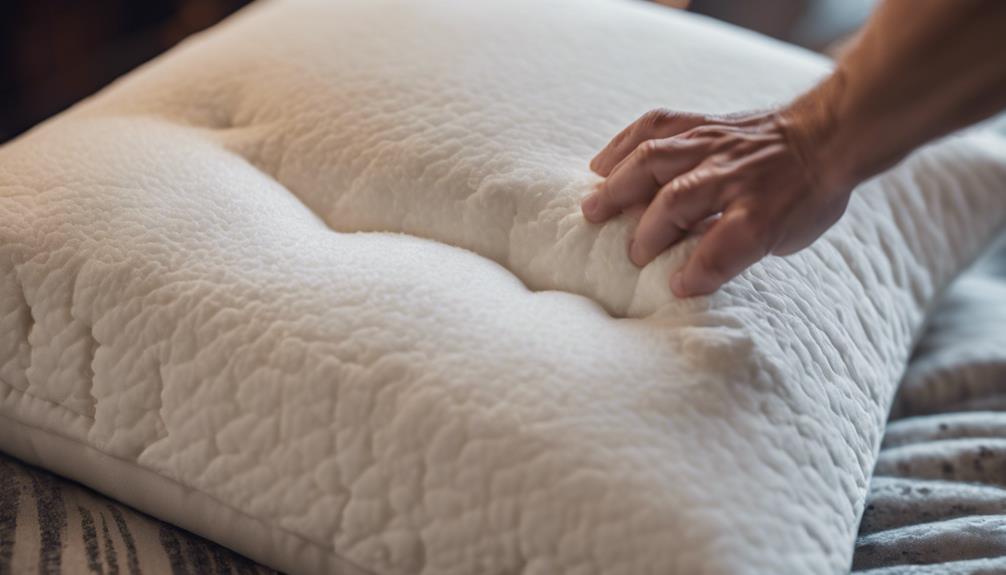
Memory Foam molds to the shape of your head and neck, providing personalized support and pressure relief. This viscoelastic material is ideal for pillow inserts and lumbar pillows due to its ability to reduce pain and discomfort by contouring to your body.
Not only does it offer exceptional support, but memory foam is also durable, maintaining its shape and benefits for an extended period. Additionally, this material is hypoallergenic, making it resistant to dust mites and suitable for individuals with allergies.
Memory foam pillows are renowned for promoting spine alignment, which can help alleviate snoring by keeping the airways open during sleep. The pressure-relieving properties of memory foam contribute to a more comfortable and restful night's sleep.
Whether you're looking for added support in a lumbar pillow or customized comfort in a pillow insert, memory foam is a popular choice known for its ability to enhance overall sleep quality.
Buckwheat Hulls
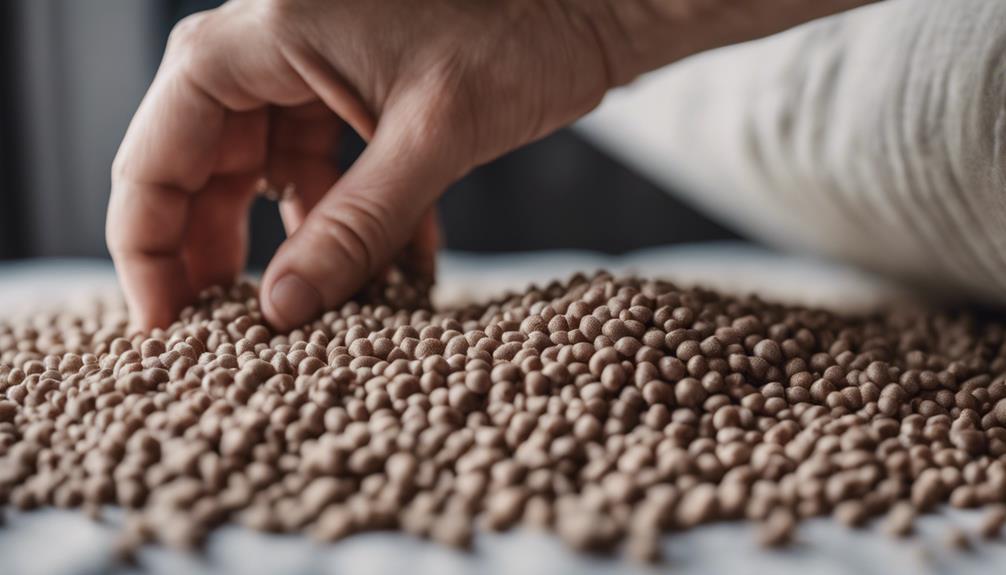
Buckwheat hulls are a natural filling option for throw pillows that offer firm support and can be molded to suit individual comfort preferences. They're an eco-friendly choice due to their sustainability and hypoallergenic properties, making them ideal for those with allergies.
Additionally, the unique texture of buckwheat hulls adds a rustic charm to pillows while providing a cool sleep experience by promoting airflow.
Natural Filling Option
With a focus on sustainability and comfort, we explore a natural filling option for throw pillows that offers unique benefits and a touch of organic craftsmanship. Buckwheat hulls are a fantastic choice due to their eco-friendly nature and versatile properties.
Here are some key advantages of using buckwheat hulls as throw pillow fillings:
- Excellent support and moldability for personalized comfort.
- Hypoallergenic and resistant to dust mites, making them ideal for allergy sufferers.
- Allow air circulation, keeping the pillow cool and comfortable.
- Unique texture adds an organic feel to throw pillows.
- To make sure even distribution, remember to fluff the pillow corners and insert in half for the best comfort.
Supportive and Moldable
Our preferred choice for filling throw pillows is a natural option that offers exceptional support and moldability. Buckwheat hulls, the filling we recommend, conform to the shape of your body, providing personalized support for various sleeping positions.
These hulls also promote air circulation, which helps keep the pillow cool and prevents heat retention. Additionally, buckwheat hulls are hypoallergenic, making them resistant to dust mites and suitable for individuals with allergies.
One of the advantages of using buckwheat hulls is their adjustability, allowing you to customize the size of your pillow by adding or removing hulls to achieve your desired thickness and firmness level. When selecting pillow covers, ensure they're compatible with the size and adjustability of buckwheat hull fillings.
Eco-Friendly Choice
Opting for an eco-friendly filling choice in throw pillows, we find buckwheat hulls to be a sustainable and biodegradable option that offers exceptional comfort and support. Here are some key points to take into account when choosing buckwheat hulls for larger pillows:
- Natural and eco-friendly choice
- Provides excellent support and moldability
- Hypoallergenic and resistant to dust mites
- Breathable for a cool sleep experience
- Sustainable, biodegradable, and easily recycled
When pillows are filled with buckwheat hulls, they not only offer a unique texture that allows for airflow, reducing heat retention, but also contribute to a greener environment due to their biodegradability and recyclability.
Kapok
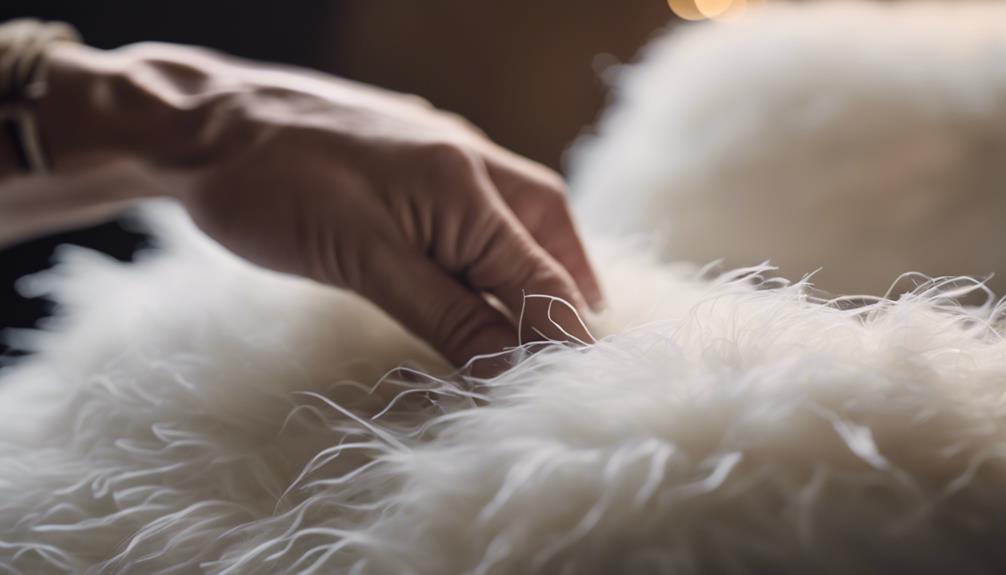
Harvested from the seeds of kapok trees, the natural fiber known as kapok is prized for its soft and silky texture. Kapok fibers are larger than the pillow, making them an excellent option for maintaining loft and support. We always use kapok as a filling material due to its sustainable nature; kapok trees require no pesticides or fertilizers to grow, making it an eco-friendly choice. Additionally, kapok is naturally hypoallergenic, resistant to mold, and mildew, making it suitable for individuals with allergies or sensitivities.
Furthermore, kapok-filled throw pillows offer a lightweight, buoyant, and breathable feel, providing ultimate comfort. Its airy texture allows for easy fluffing and reshaping, ensuring the pillow retains its shape over time. If you're looking for a filling material that's both luxurious and environmentally conscious, kapok is an ideal option for your throw pillows.
Frequently Asked Questions
What Is the Best Filling for Throw Pillows?
We believe the best filling for throw pillows is down and feather. It provides a luxurious feel and a plump appearance that adds elegance to any space.
A mix of 50/50 or 30/70 down and feather blend offers a high-quality look and feel. Retailers like Pottery Barn often offer superior feather-filled inserts for throw pillows.
Comparing feather-filled and synthetic inserts can help determine the best choice for your throw pillows.
What Can I Fill My Pillow With?
We can fill our pillow with various materials like polyester fiberfill, down, feathers, memory foam, or microbeads. Each filling option offers unique benefits.
Polyester fiberfill is affordable and shape-retaining, while down and feathers provide a luxurious feel.
Memory foam offers support and conforms to the body.
Microbeads are lightweight and moldable.
The choice depends on preferences for comfort, support, and texture.
How to Make a Throw Pillow Fuller?
To make a throw pillow fuller, choose a high-quality insert with a higher feather-to-down ratio for a luxurious feel. Opt for a larger insert than the cover size to achieve a plumper appearance.
Fluff and manipulate the insert inside the cover evenly for a fuller look. Guarantee the corners are well-filled to prevent a flat or lumpy appearance.
Regularly fluff and adjust the pillow to maintain its fullness and shape over time.
What Is the Cheapest Way to Fill a Pillow?
The cheapest way to fill a pillow is by repurposing old clothes or fabric scraps. This budget-friendly option involves using materials like cotton, polyester, or wool from old clothing to stuff throw pillows without added expenses.
Upcycling fabric remnants or shredded textiles from linens, towels, or blankets can provide a sustainable and cost-effective solution for filling pillows. DIY stuffing with household items offers an economical alternative to purchasing new pillow inserts.
What Materials Are Typically Used to Fill a Throw Pillow?
Throw pillows are typically filled with a variety of materials, depending on the desired firmness and support. Some common fillings include down feathers, foam, polyester fiberfill, and even memory foam. These materials provide the necessary fluff and comfort, which is why throw pillows are called a staple in home decor.
Conclusion
To sum up, the choice of filling for your throw pillow ultimately depends on your personal preferences and needs.
Whether you prefer the plushness of down feathers, the support of memory foam, or the eco-friendly option of buckwheat hulls, there are various options to suit your comfort level.
Remember, the right filling can make all the difference in turning your throw pillow from ordinary to extraordinary, so choose wisely to guarantee a cozy and inviting space.
